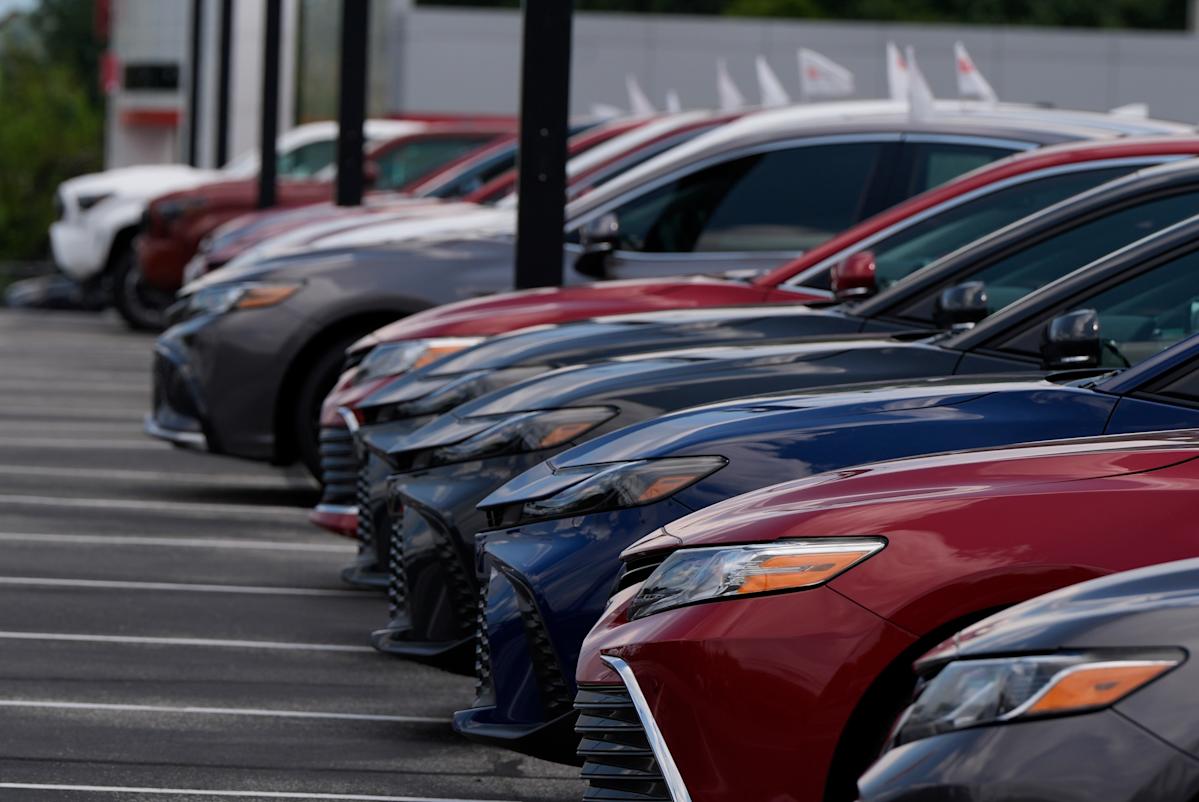The auto sector is taking President Trump’s tariffs on the chin. Toyota (TM), the world’s largest automaker, was the latest to reveal the impact it’s seeing from tariffs in its earnings on Thursday morning, with slightly over $3 billion wiped from its fiscal Q1 (June 30) operating income.
Powered by Money.com – Yahoo may earn commission from the links above.
With Toyota’s results in, the cumulative tariff hit from the largest automakers following the end of the June quarter stands at around $11.7 billion, per automakers’ financial disclosures. Toyota had the largest exposure, followed by rivals like Volkswagen (VWAGY), GM (GM), Ford (F), Honda (HMC), and others. China’s top automakers were excluded from the list as they do not operate in the US.
Automakers, including Toyota and Honda, are not only seeing imports from their home market of Japan hit with tariffs (15%). They’re also dealing with higher overall auto sector tariffs of 25% impacting operations from countries like Canada and Mexico. This also goes for the Big Three — Ford, GM, and Stellantis — which have significant operations with US-Mexico-Canada Agreement (USMCA) partners.
Even Tesla (TSLA), which makes all of its vehicles in the US, had a significant tariff impact from duties on auto parts like batteries for EVs.
“The cost of tariffs increased around $300 million with approximately two-thirds of that impact in automotive and less in energy. However, given the latency in manufacturing and sales, the full impacts will come through in the following quarters,” Tesla CFO Vaibhav Taneja said on the company’s earnings call on July 23.
The knee-jerk reaction for automakers would be to raise prices while eventually moving toward more US production. But neither option is an easy fix to avoid tariffs.
Read more: What Trump’s tariffs mean for the economy and your wallet
GMC Hummer EVs at General Motors’ Factory Zero electric vehicle assembly plant in Detroit in November 2021. (Nic Antaya/Getty Images) · Nic Antaya via Getty Images
“Investment for new assembly plants is considerable and requires a larger rationale than a one-term presidential administration,” AutoForecast Solutions auto manufacturing expert Sam Fiorani said. “Building a new factory requires three to five years of planning and, likely, one or two billion in investments. Even retooling an existing facility will need around half a billion dollars.”
Fiorani noted that the financial outlays for factory spending have to be weighed against the cost of paying tariffs over the next three years.
Most high-volume models, which typically have lower profit margins, like the Nissan Rogue, are already built in the US. Moving some high-volume vehicles that are built at scale in a foreign location, like the Chevrolet Equinox, may not make sense to move to the US. On the flip side, building certain low-volume, high-profit vehicles in the US wouldn’t make economic sense either.
Story Continues
